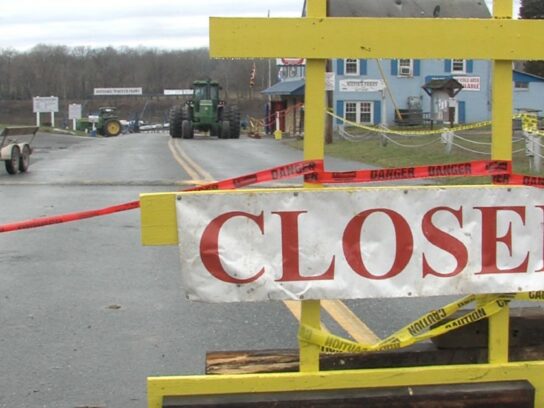
Montgomery County transportation leaders detailed a recently-released White’s Ferry study and clarified the county’s role in restoring service during a virtual meeting Wednesday evening.
Since 1786, the ferry had transported commuters across the Potomac River between Poolesville and Loudoun County, Virginia. In Dec. 2020, the ferry shut down service following a court ruling that found there is no legally established public or private landing on Rockland Farm, the Virginia property where the ferry operated. Early this year, Virginia businessman Chuck Kuhn purchased the ferry and the Maryland side where it operates. He committed to restoring service before summer 2022.
The joint study was led by Montgomery and Loudoun counties’ transportation departments. It examined reliability of the ferry and options for resuming service.
Hannah Henn, Deputy Director for Transportation Policy with the Montgomery County Department of Transportation (MCDOT), clarified that county government is not party to the private negotiations between both sides. The new study is not about land acquisition or eminent domain. She hopes the study provides helpful information to facilitate negotiations and share with elected officials. One goal was to take a data-driven approach to calculate patterns of usage and ridership on the ferry.
“So that when we try to justify our efforts in reopening the ferry, that we can show that while this may be a private business, it really is performing a public service,” Henn said.
“The findings of the study did show that while this is technically a boat moving across the water, the purpose that people are using it for is the same as if they were using any other road or bridge.”
The study includes detailed traffic analysis that used anonymous and aggregated smartphone location-based data provided by streetlight data, said Kyle Lukacs, planning specialist with MCDOT.
The data found that the volume of trips between Montgomery and Loudoun counties is forecast to increase 40% between 2019 and 2040. Without ferry service, Lukacs said, average travel times will increase by 17 miles and 11 minutes in 2040. Minute estimates include about 15 more minutes of active travel that would have otherwise been time spent queuing on the ferry.
According to the study, ferry service could restart within weeks if an agreement about the Virginia landing side is reached. It detailed three potential service scenarios in the immediate, short-term and long-term. In the immediate scenario, the minimum requirements for restarting service are vessel inspection, hiring any needed staff, confirming valid certification and restringing the ferry cable.
Lukacs clarified the study does not specify a preferred method to resolve the ongoing legal dispute.
Henn said Montgomery County is standing ready to work with Loudoun County, like ensuring all land information about the Maryland side of the ferry is clearly defined.
District 1 Councilmember Andrew Friedson said the report allows for a public role in this issue to ensure government can participate in the matter. Partnership with Loudoun County in the study is a game changer, he said.

